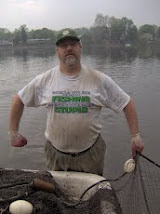…THE
WHOLE WORLD SMILES AT YOU
On January
17, 1920 the United States entered into the dark ages. On this sad day the 18th
Amendment went into effect and Prohibition began. Enforced by the Volstead Act,
the amendment prevented the manufacture and sale of alcohol throughout the U.S.
and it lasted 13 sorrowful years until its repeal by the 21st Amendment.
Nationwide the law proved difficult to enforce and the party never really
stopped, it just had different hosts.
Think
of bootleggers Lucky Luciano and Al Capone and think of that army of
Federal Prohibition agents or Prohis like Elliot Ness trying to crash the
party. They called them there days the Roaring 20’s for good reason.
ABSTINENCE,
BUBBLERS AND CAPONE
The
question needs to be asked.
Now, why on God’s good earth would anyone want to ruin a good time by prohibiting alcohol? Don’t they realize that’s the best they will feel all day if they don’t drink? Sobriety, I’ll drink to that.
Now, why on God’s good earth would anyone want to ruin a good time by prohibiting alcohol? Don’t they realize that’s the best they will feel all day if they don’t drink? Sobriety, I’ll drink to that.
Well,
the temperance movement was churning along for decades before the Prohibition
Act was finally ratified. Teetotalers strongly felt there was a direct
correlation between alcohol consumption and the loss of self-control, disease,
death, suicide and crime and that abstinence was the only way to combat this
affliction.
Also,
because of the industrial revolution there was a need to have people operate
the machinery of the day safely, and, during WWI there were scattered worldwide
prohibitions in several countries. Grain was in short supply and needed for
food and not distilling into alcohol.
ALCOHOL…
THE CAUSE OF AND SOLUTION TO … ALL LIFE’S PROBLEMS!
During
this time much of continental Europe, the UK, Finland, Canada and even Russia
had some sort of restriction on alcohol, although this all eventually melted
away after the war. Still, the U.S. stuck to their guns and carried on with
prohibition until it was finally repealed in 1933.
WHEN I
READ ABOUT THE EVILS OF ALCOHOL, I STOPPED READING
One “refreshing”
attempt to keep people sober can still be found today in Portland Oregon. In
1912 Simon Benson, a local entrepreneur, gave the city $10,000 to install bronze
drinking fountains in the downtown area hoping this would encourage his workers
to drink water in the middle of the day and not alcohol. If you needed a drink
have water instead. The fountains were affectionately nicknamed Benson
“Bubblers” and Portland Oregon even has a walking tour of the fountains that
still run 365 days a year, except when there is an extreme cold snap.
 |
| A Benson Bubbler |
24
HOURS IN A DAY … 24 BEERS IN A CASE? NOT A COINCIDENCE!
Well,
despite the best efforts by teetotalers and our government to save us from
demon drink, Prohibition was very unpopular through much of the country and
bootleggers cashed in and fought vicious turf wars to maintain profits.
Think St. Valentine's Day Massacre...
Although
the Volstead Act stipulated that individual states should help enforce
Prohibition, compliance varied from state to state. Some state governors would
not appropriate money to this cause and Maryland never enacted an enforcement
code and became staunchly anti-prohibition. It is estimated that in New York
City there were 30,000 illicit Speak-easies, or illegal bars, but by 1923 the
Empire State had repealed its measures. By the late 1920’s Americans were
spending a lot on black-market booze. For example, the booze “industry” in
Detroit was second only to the auto industry. When the Great Depression hit,
anti-prohibitionist argued for repeal because the lost tax revenues to the
government were too costly to ignore. Franklin D. Roosevelt campaigned on a
promise to repeal the 18th Amendment and he won the election in a
landslide.
I
DRINK TO MAKE OTHER PEOPLE MORE INTERESTING
Though
Prohibition ended at the federal level some states still banned alcohol within
their borders. Kansas was a dry state until 1948 and Oklahoma until 1959 and
Mississippi was dry until, gasp, 1966!
To this day there are still 10 states that have dry counties.
Even New
Jersey, that great corridor state has over 30 towns that are dry to this day.
Many of these dry NJ towns are in the southern half of the state and have
strong ties with various religious groups like Quakers and Methodists, but
there are a few in the northern sections as well, like Saddle River and
Pennington and Far Hills. Though you can’t purchase alcohol in these towns, you
can still drink, although you obviously can never drink and drive.
Incidentally, DWI arrests are higher in dry towns, because you can’t walk home,
but have to drive.
Some have
BYOB restaurants and some dry towns, oddly enough, have breweries and wineries
within their borders. This may not make sense, but licenses to manufacture
alcohol are issued by the state and not the municipalities.
For
example, Kings Road Brewing Company is located in the dry town of Haddonfield
and their tasting room is open every day except Monday.
DRIVE
ME TO DRINK
Another
lasting reminder of the Prohibition era and today a very popular sport is NASCAR
or National Association for Stock Car Racing. Bootleggers and rumrunners relied
on cars that could pass the eye test for looking normal on the street, but with
modified engines that made them faster than the ones driven by Prohibition
agents and police chasing them. Drivers with daredevil abilities at negotiating
sharp turns at reckless speeds while maneuvering along dirt, gravel and
blacktop roads were busy from Washington to North Carolina throughout Prohibition.
On weekends “runners” throughout the
south would race each other for fun in their modified cars on makeshift dirt
tracks, which eventually evolved into NASCAR in 1947. Today races like Daytona
500 and the Brickyard 400 are just a few of the well-attended races on the
yearly schedule.
 |
| LLOYD THE BARTENDER |
YOU’RE
NOT DRUNK IF YOU CAN LIE ON THE FLOOR WITHOUT HOLDING ON
So, the
great Prohibition movement to keep us sober started on January 17, 1920. Now,
there’s no law that says you can’t drink, or get drunk. It’s not illegal to be
drunk in public, but you can’t drive. Please remember that! You can be drunk,
but you can’t be a nuisance and disorderly and give your bartender a hard time.
He has a difficult job as it is trying to figure out if someone is drunk or
just stupid.
PLEASE DRINK
RESPONSIBLY....SERIOUSLY
© 2020 by Greg Dunaj





































No comments:
Post a Comment